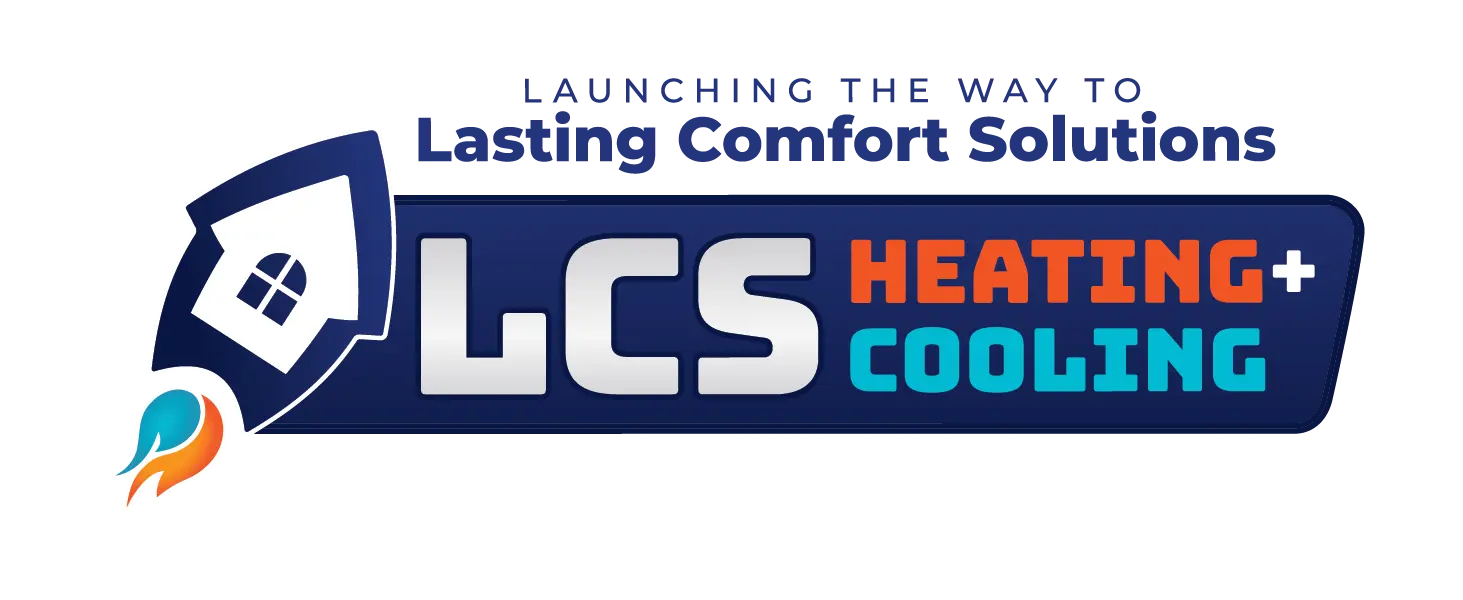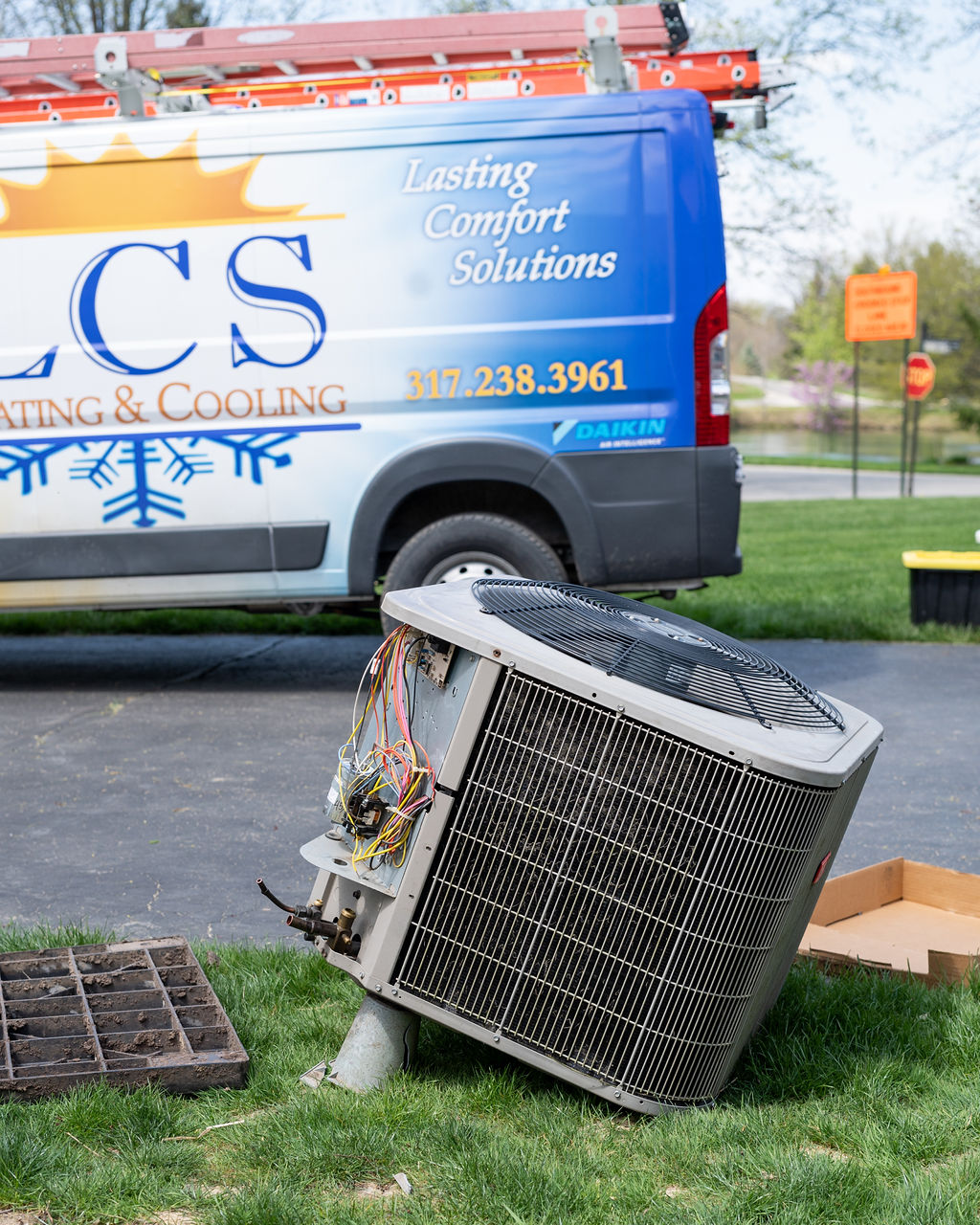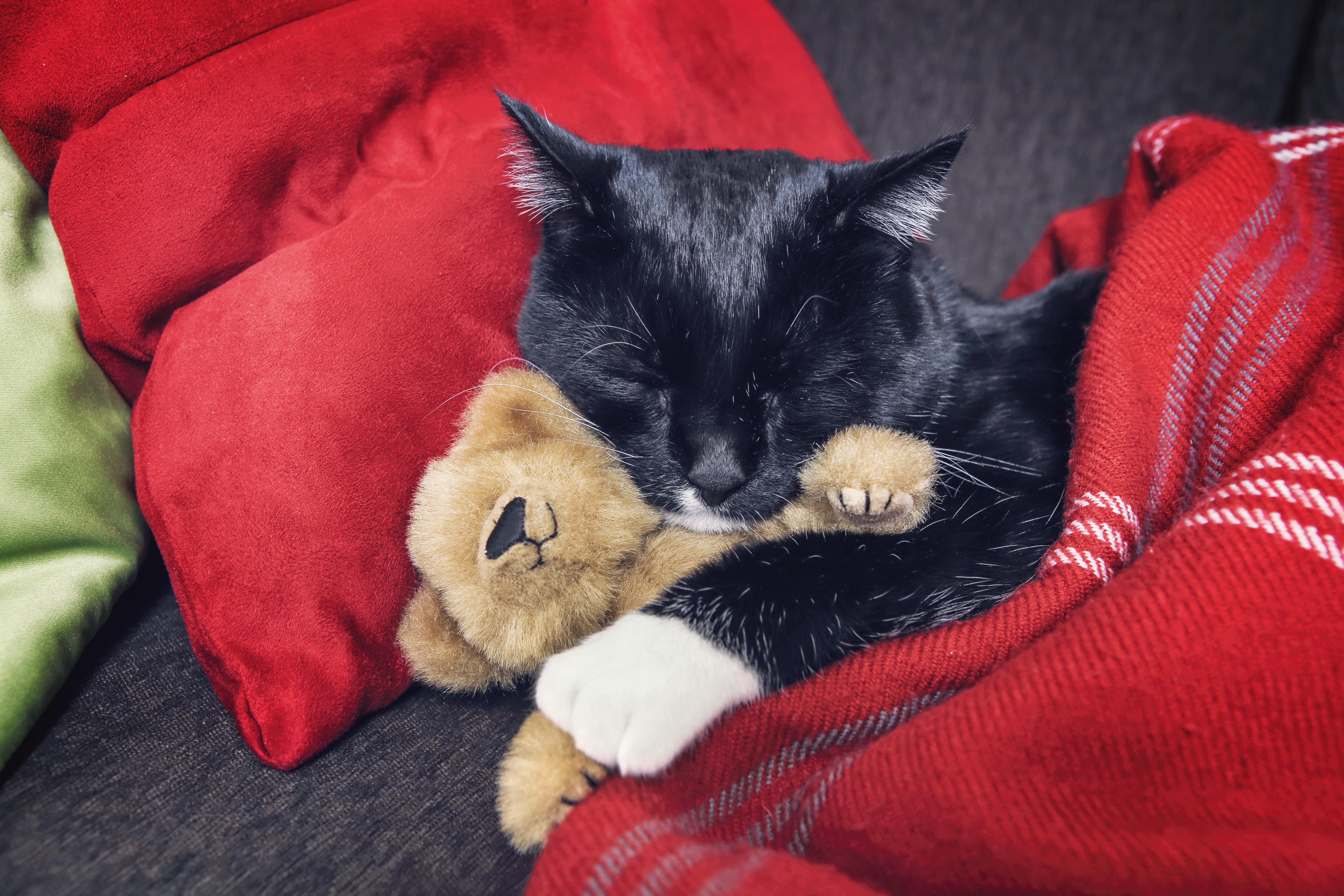Planning for HVAC Replacement
Why is it that your HVAC goes out when you least expect it… and may be least prepared to replace it? We hear the sentiment over and over again: “This is the worst timing!” “I was hoping to get through the summer!”
We hate to see emergency HVAC replacements that put our customers in tight spots. That’s why we always recommend trying to plan ahead for HVAC replacements. Be prepared and not caught off-guard when your system bites the dust!
The Power of Planning
If your HVAC system is more than 9 years old, it’s probably time to start planning for a replacement. A good place to start is by evaluating your current system's efficiency and overall performance. Consider any recurring issues, rising utility bills, or uneven heating/cooling in different areas of your home or building.
With this information, set clear goals for your future HVAC investment. Are you seeking better energy efficiency, improved indoor air quality, or enhanced comfort? Outline your priorities to guide you in making informed decisions.
Once you’ve determined what’s working and what’s not with your current setup, consider giving us a call to find out what options you have for replacement. We can help you consider the system you might want and the costs you’ll want to save toward.
 Saving for the Future
Saving for the Future
Investing in an HVAC system is a financial commitment that can set you back if you’re not prepared.
Consider creating a dedicated savings account and contribute regularly to it. One tip is to set up an automatic payment into this savings account on payday. Even just $20 a paycheck can help you build toward your savings goals. By saving specifically for this investment, you can minimize the need for loans or putting your purchase on a credit card, ultimately reducing the overall cost.
Additionally, there are also potential financial assistance programs or tax incentives that may be available for energy-efficient HVAC installations.
Seizing the Right Time: Specials and Deals
Once your savings start to grow, keep an eye out for specials and deals. We regularly have promotions, both from our manufacturers and ones that we offer just for our customers. Keep an eye out for promotions during specific times of the year, such as the transition between seasons or during holiday sales events.
Maintenance: A Crucial Component of Your Investment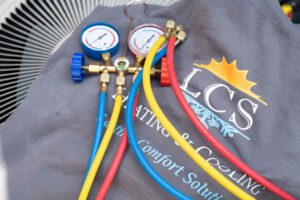
Investing in your HVAC system doesn't end with its installation. Proper maintenance is key to the longevity, efficiency, and reliability of your system. Regularly scheduled maintenance can prevent costly breakdowns, optimize performance, and extend the life of your system.
Our tip here: Create a maintenance schedule and stick to it. You can do some tasks on your own, like changing air filters, but there are other tasks you’ll want to leave to an expert. Contact us for annual or bi-annual inspections and tune-ups to help your investment really pay off in the long run.
HVAC Replacement in the Indianapolis Area
If you’re ready to begin the process of upgrading your HVAC, contact us to learn more and get a quote for installation!
Remember: a well-maintained HVAC system not only saves you money but has a better chance to live a long life. So, take the time to research and invest wisely in a system that aligns with your needs. With careful planning, saving, and commitment to maintenance, you'll enjoy the rewards of a lasting comfort solution for years to come!
How to Address Hot and Cold Spots in Your Home
Your upstairs is hot. Your downstairs is freezing. You can’t find a single spot in your home where you feel comfortable. If this sounds familiar, you may have a problem with hot and cold spots.
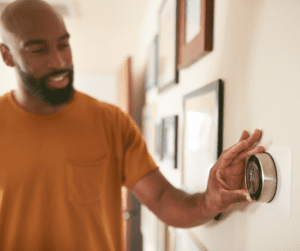 Why do I have hot and cold spots in my home?
Why do I have hot and cold spots in my home?
There are several factors that cause hot and cold spots in a house. One of the most common causes is improper ductwork design. Other possible causes include poor insulation and air leaks, which can allow hot or cold air to enter or escape through cracks and gaps in the walls, windows, or doors. Other factors that can contribute to hot and cold spots include problems with the HVAC system and even the position and orientation of your home in relation to the sun.
Do I need to replace my HVAC?
The good news is that you likely don’t have to replace your HVAC system to address hot and cold spots in your home. There are many possible solutions, depending on your home setup, to fix the problem.
What can I do to fix hot and cold spots in my home?
Depending on the specific issue in your home, resolving hot and cold spots can take different forms.
- Zone Your Home: What does this mean? Most of the time your home is on a single thermostat in one zone. When we zone your home, we create multiple zones, each with its own thermostat. This allows you to control the temperature independently in each zone or area of your home. Some homes can be zoned, but some cannot. If you’re not sure if zoning would be an option for your home, contact us!
- Ductless Mini-Split: A mini-split can be a great solution if you can’t zone your home, or if a smaller area of your house is impacted. This option involves installing a system that’s separate from your traditional furnace and air conditioner. A mini-split has an outdoor unit, along with one or multiple indoor heads. This unit is controlled by its own thermostat, giving you complete control over the temperature in that space. Mini-splits are especially great for large bedrooms, bonus rooms, and sunrooms.
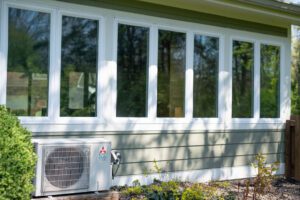
Outside of these solutions, there are some additional steps you can take that may not be true fixes but can alleviate the problem a bit by closing the gap from one end of your home to the other or between your upstairs and downstairs temperatures.
- Solar-Powered Attic Fan: While it can’t completely resolve hot and cold spot issues, a solar-powered attic fan can help keep your attic cooler, which in turn can keep the floor directly below the attic cooler. There are no long-term costs associated with a solar-powered attic fan since it runs on solar. As an added bonus, removing some of the heat from the attic will extend the life of your roof decking and shingles! Learn more about this solution in our blog post: Are Solar-Powered Attic Fans Worth the Expense?
- Thermostat with Sensors: Thermostat sensors can be placed around your house to determine an average home temperature to maintain a more comfortable temperature throughout.
HVAC Solutions in the Indianapolis Area
If you’re not sure what solution will work best for your home, contact us. Our expert technicians can come out, diagnose your issue, and recommend the best possible solution for your home and for your comfort!
The cool air, turning leaves, and arrival of apple cider at the store mean that autumn’s official start is just around the corner. At home, this seasonal change can quickly translate into higher energy bills. Fortunately, there are a few ways to lower these costs. Staying comfortable in your home—at an affordable rate—is relatively easy when you opt for energy-efficient solutions.
Schedule Your Heating Tune-Up
This time of year, the biggest energy bills for your home relate to heating. In order to get the best efficiency rating for your furnace, it needs to be able to run smoothly. Any problems during this season can be a real issue for your overall costs. But you can catch issues early on by scheduling your heating tune-up. This service helps ensure that all of your system’s components are within the normal operating range. That way, if any part is having trouble, you can have the option to be pro-active for a repair or replacement. And this could save you a service call down the road!
At LCS Heating & Cooling, we offer Annual Maintenance Plans to help keep service and energy costs low year-round. Getting notified of any potential problems lets you stay up-to-date on your furnace’s needs. When you look ahead to winter, no one wants to be caught without heat. A quick visit from your local HVAC company can help you avoid that inconvenience before the cold snap.
Other Home Efficiency Tips for Fall
Once your furnace is in order, you can still work to lower costs in other ways. Adding these efficiency tips to the mix can help you finish the year with extra energy savings. Try them all for the biggest benefits, or just stick to a few to get the ball rolling.
1. Change your air filter
We always recommend preventative maintenance to prep your home. But if you do nothing else this season, replace your air filter. It’s important to swap out your 1-inch air filter every 1-2 months. (The larger 4 to 5-inch media filters can last for 6-12 months.) This simple step goes a long way for your unit’s overall efficiency. A dirty filter can put a lot of strain on your heating unit and make it harder for the warm air to circulate through your home.
2. Warm up with the sun
The days and nights are getting colder, but the sun is still shining. Make the most of sunny days by opening your curtains to let this natural heat inside. South-facing windows tend to have the most impact. Just keep your curtains closed when the sun is set to hold in the warmth, then pull them back in the morning to create some sunny spots. This will help boost your home’s temperature. Plus, it gives your dog or cat a great place to nap!
3. Adopt a smart thermostat
When you want to go above and beyond for your home energy savings, a new thermostat can be a real winner. A programmable thermostat is a great investment because it lets you set schedules for your heating and cooling programs. You’ll get more efficient ratings, for instance, when you tell the heat to drop slightly in the evening, or when you’re away at work. A smart thermostat is even better because you can control your home’s settings right from your phone.
4. Grab some free LED bulbs
Changing your old lightbulbs to LED versions is a fantastic way to cut costs on your energy bills because they use up to 66% less energy. They even last over 20 times longer than standard bulbs. The best part about these updates? You can get LEDs for free! The Free LED Program from Duke Energy will ship bulbs right to your home. The potential savings could be upwards of $100, so there’s no reason to pass up this deal.
5. Watch for home air leaks
Feeling a cold air draft around your windows or outside doors indicates a heating leak. Don’t let these spots add to your energy bill. Adding fresh caulk around these borders or replacing the weatherstripping can prevent your home’s heat from escaping. The other thing to check is your fireplace damper. Make sure to always keep this closed when your fireplace isn’t in use. Accidently leaving it open is just another way to lower your indoor temperature.
Take this advice, and you’re sure to have a more energy-efficient home for the colder months. What’s more, you’ll be able to enjoy upgrades like a smart thermostat during the warmer months as well! If you have questions about other energy savings solutions for your home, give LCS Heating & Cooling a call at (317) 238-3961. We’d be happy to help you out!
September 17, 2018
There are all sorts of ways to help make your space more comfortable this time of year. After all, this is the season for cuddling up with hot cocoa! If you’re concerned about climbing energy bills, fear not. Keeping cozy all through the winter relies on a lot more than just your thermostat settings.
1. Winter Home Energy Efficiency
Of course, having a good furnace or heat pump is crucial this time of year. (Be sure to call us at 317-238-3961 if you need a hand!) But even if all of that equipment is working fine, you can still make your home a little more snug with one of these energy-saving wintertime tips. A quick home improvement project can make a big difference to boost your home’s efficiency ratings.
Locate and Fix Leaks
Warm air can escape through leaky doors and windows. If it feels like you’re always getting a slight draft around these spots, it’s probably time to add new caulk or weatherstripping. This will help keep your heat inside, where it belongs. You’ll also want to look for any gaps around the chimney and remember to keep the fireplace damper firmly shut whenever it’s not in use.
Find Your Sunny Spots
You can also save money by making the most of the sunlight that hits your home. One simple trick is to keep your curtains open on south-facing windows. When the sun is bright, your home can heat up naturally and help you save energy. Then at night, just draw your shades and other window treatments to lock in the warmth. This lets your curtains work as an extra barrier to hold back cold drafts.
Buy a Better Thermostat
Turning down the temperature when you aren’t at home can help you get some additional energy savings. For a lot of homeowners, the best way to get these benefits is with a programmable thermostat. These gadgets are great investments for homeowners looking to lower their energy bill for the long-run. A programmable thermostat lets you set a schedule for your heating and cooling equipment, so you can get the best efficiency every day of the week.
2. Whole-Home Humidifier Benefits
Outside of high energy bills, another nuisance during the winter tends to be dry air. Dealing with scratchy throats can put a really damper on your holiday spirit. (Not to mention getting static shocks whenever you pet the cat or dog.)
Dry air also leaves our skin feeling dry and chapped in winter. Instead of relying on lotion alone, we like whole-house humidifiers. Unlike portable units, these systems address dry air problems in every room. Having proper humidity levels all throughout your home helps give you softer skin, less static, and better breathing all winter long.
As an added bonus, whole-house humidifiers also help make your home feel warmer. This is because dry air naturally seems colder than air with some humidity. By introducing a little more moisture into your air, your home can actually be more comfortable in winter—without even raising the temperature on your thermostat!
3. Smart Home Holiday Cooking
To really seal the deal on your home’s coziness, be sure to embrace home cooking. Whether you’re entertaining friends and family or just hanging out on a quiet night, spending a little time in the kitchen will definitely make your house feel more like a home.
Fixing meals in your crockpot is great this time of year because you can come home to a hot meal after checking out any one of your favorite winter activities around Indianapolis. It's even better if you're cozy at home while it cooks. The smells from your slow cooker can definitely help spread some cheer! Here’s a recipe for one of our favorites:
Crockpot Lentil and Pasta Stew
Preparation Time: 25 minutes
Cook Time: 8-10 hours
Serves: 8
Ingredients:
½ lb. smoked kielbasa sausage, chopped
3 Tbsp. olive oil
3 Tbsp. butter
1 cup cubed, peeled potatoes
¾ cup sliced carrots
1 celery rib, sliced
1 small onion, chopped
5 cups beef broth
1 cup dried lentils
1 cup uncooked ditalini (or other small pasta)
1 bay leaf
1 tsp. pepper
¼ tsp. salt
shredded romano cheese to serve
Directions:
- Brown kielbasa in oil and butter in a large skillet.
- Add potatoes, onion, carrots, and celery to skillet. Cook and stir for 3 minutes over medium heat.
- Transfer ingredients to a large slow cooker.
- Stir in broth, lentils, bay leaf, pepper and salt.
- Cover and cook on low for 8-10 hours, or until lentils are tender.
- Meanwhile, cook pasta according to package directions. Drain. Stir pasta into slow cooker. Discard bay leaf. Sprinkle with cheese and serve!
All of us here at LCS Heating & Cooling wish you a warm and bright holiday season! If you need any emergency help with your equipment, you can always give us a call at 317-238-3961.
December 21, 2017
When it’s cold outside, your heating units need to be able to keep you home comfortable. But if your furnace isn’t sized right for your home, you’ll just end up wasting money. Or worse—you’ll be dealing with a chilly “winter wonderland” inside!
Furnace Size and Ductwork
Most people tend to think that furnace size is only determined by square footage of their house. However, the biggest factor is actually the size of the ductwork. If your furnace size and ductwork don’t match up, you’re bound to have some problems.
For example, if the ductwork is too small for your furnace, the furnace will end up having a shorter lifespan than it should. The reason is because the amount of air that the furnace produces doesn't have enough space (ductwork) to travel through. Therefore, it restricts air flow and can eventually cause the furnace to overheat. To compare, it's kind of like driving a big truck with a MINI Cooper radiator in it.
If you want to get the best lifespan out of your furnace, you need to make sure it’s sized appropriately for your ductwork—not just your square footage. Experiencing any of the problems listed below is a sure sign that your equipment need a review.
Problems with Furnace Size
There are basically three possible scenarios for your home’s furnace size. You’ll either have a furnace that’s too big, one that’s too small, or a unit that’s sized just right for your home’s layout, the ductwork, and family needs. Keeping all these factors in mind will help you get an effective, energy-efficient setup.
Too Small
Having a furnace that is too small for your home means the system won’t be able to keep up with the dropping temperatures outside. They simply can’t make up the difference to heat your home properly. It might come with a lower price tag upfront, but the trouble of having a furnace that can’t even do its job isn’t worth the hassle.
When furnaces are too small, they’ll have to kick on often—or even non-stop—try to increase your indoor temp. They end up running and running, but without any real progress. This leads to excessively high energy bills, and not much help in making your home comfortable.
Too Big
Of course, a furnace that is too big won’t be much help either. When units are oversized for the space they’re heating, the furnace ends up working in quick bursts. They’ll turn on when the temperature is low and just end up creating heat pockets. Since the system works at full blast and heats some areas super-quickly, there isn’t enough time for the heat to travel throughout the home evenly.
The furnace then ends up turning on and off more times than is necessary. A few areas get toasty, and then the system turns off. Then, as that heat spreads out, the unit has to warm up again and start all over again. This makes over-sized furnaces really inefficient. For most homes, bigger units aren’t better.
Your Right-Size Furnace
A furnace that is appropriately sized for your home and needs will turn on and heat your space gradually. This makes the process much more energy-efficient and puts less strain on your equipment. If you’ve been noticing that your furnace is running non-stop, there’s a good chance it’s too small for your home. And if it’s constantly starting and stopping, you might be living with a unit that’s too big.
When you have a furnace that’s sized correctly for your home, you shouldn’t have to worry about any hot or cold pockets in your home. But even the most efficient systems aren’t totally fool-proof. On the coldest night of the year, your furnace may not be able to keep up. This is actually normal. Systems that plow through those sub-zero temps are likely working inefficient the rest of the year. You may need to throw another blanket on the bed during that extra-chilly spell, but at least you’ll know you aren’t over-paying for a unit that’s too big!
Finding the Perfect Fit
Working with an experienced local HVAC company is a great way to ensure you’ve got a heat pump or furnace that’s working with your home setup and ductwork—not against it. The best way to get the best heating system for your home is to work with the pros. An experienced HVAC technician can help you find the right-sized unit for your space and get it installed properly so it lasts longer and stays efficient.
Not sure if your system is running at peak efficiency? Contact LCS Heating and Cooling. We’re proud to provide our neighbors with great service and honest feedback. Give us a call at 317-238-3961 to schedule your Heating Tune-Up before the holidays hit. We’ll help keep your home comfy all year long!
October 19, 2017
Outdated dial thermostats prevent you from enjoying a comfortable (and fuss-free) home environment. For easy home upgrades, new tech is where it’s at!
The latest programmable thermostats are an easy upgrade for energy-efficiency. And a smart thermostat will even let you change your home’s temperature remotely. Depending on the model you choose, you can enjoy a few other perks, too.
About Programmable Thermostats
Most programmable thermostats include different settings based on the day of the week. This is great for homeowners who have a pretty consistent routine Monday through Friday. When your thermostat is set to your schedule, it will automatically adjust your indoor temp when you’re away, then bring it back to a comfortable level when you return.
As a general rule, you want your programmable thermostat to do the thinking for you. You don’t want to be worried about changing the temperature and checking in when you’re getting ready to leave the house. Programming your settings helps you save on energy costs when you don’t need that “perfect” indoor temp—like when the whole family is out running errands, working, or at sports practice.
Comparing Thermostat Models
When it comes to programmable thermostats, there isn’t always a clear winner. It usually just depends on what features would be most useful to you. Of course, some devices are made better than others. They might come with better warranties or have a more intuitive display. These factors should always be considered, as should price. You don’t want to pay for a model that doesn’t do everything you want—just like you wouldn’t want to overpay for a setup that does more than you need.
At LCS Heating & Cooling, we like to set our customers up with programmable thermostats. Hands down, our two favorite are Lennox and ecobee. They’re different enough to provide unique perks, and they’re also both easy to use. If you’re still dealing with a dial thermostat or some other inconsistent system, either one of these would be a sweet upgrade.
Lennox
If you’re already using Lennox equipment with your home's heating and cooling equipment, it usually makes the most sense to stay on-brand and go with the Lennox Smart Thermostat. We really like this unit because it holds your temp within a half a degree of your preferred setting. (Talk about precision!)
- Smart, programmable thermostat—compatible with all Lennox equipment
- Make temperature adjustments from your smartphone with the iComfort App
- Plus, the option to update the screen’s background display with a personal photo
The iComfort Wi-Fi setup can even be used to monitor the 5-day weather forecast and other key weather alerts. It’s also really user-friendly. The simple design also lets you adjust settings with one touch. That way, you can tap a button for both “Leaving Home” and “Returning Home” status as you head in or out the door.
Not sure about the one-touch option? The iComfort S30’s Smart Away mode can adjust your temperature settings for you by sensing when your smartphone enters and exits your home. If your thermostat notices that your phone is out of the house (presumably because you, yourself are away), it will know to tweak the temperature accordingly. The same thing happens when you’re at home. Because it can quickly coordinate with your activities in real time, you can be sure to get a great efficiency with your home’s heating and cooling.
ecobee
Tech-savvy homeowners really appreciate the communication style of the ecobee. These units come with an ultra-modern design and easily connect with your smartphone.
- Sleek designs and smart, programmable thermostats
- Options to sync with your Amazon Echo account or Alexa App
- Plus, the newest models come with room sensors to help monitor hot and cold spots
The latest ecobee 4 model comes with Amazon Alexa Voice Service already built-in, so it’s super helpful if you want to create a “smart” home. You can communicate with your Amazon account through the ecobee unit and ask it to order groceries, check the news, and more. The voice control is great for hands-free adjustments, like if you’re busy in the kitchen or on the other side of the room.
Need a break from the tech for a little while? You can always turn off the microphone for Privacy Mode. Because ecobee is designed with the end-user in mind, you can trust that customizing your settings will be a breeze. For a jump start, though, it can help to work with a professional for your thermostat install. They can help show you all the ins and outs of your new system, right from day one.
Professional Thermostat Installation
A lot of people don’t realize that they can get a better warranty with their new thermostat when they work with a local HVAC company or contractor. Because the major manufacturers offer different products to contractors, you’re more likely to get access to better models. That’s why it's usually better to skip the DIY and go with a registered dealer.
At LCS Heating & Cooling, we’re here to make the process easy for our customers. We’ll even register your new equipment for a 5-year part warranty and a 1-year labor warranty. You can get an even better warranty (up to 10 years) and extra savings if you get your new thermostat installed with new HVAC equipment. If you’re ready to make the switch, contact LCS to schedule your in-home consultation. We know you’ll love your new setup!
August 29, 2017
No one wants to spend more money on their bills. You should only pay for what you need, right? Yet some HVAC setups don’t work that way.
Every now and then, we see homes that consistently waste energy by heating or cooling rooms that you don’t even use. And when that happens, you end up overpaying on your energy bills. If your HVAC system can be organized the right way, you only use what you need. Your home’s warm or cool air can get directed where you actually want it. That way, you won’t get overcharged for your energy usage. The setup is called zoning.
About HVAC Whole-Home Zoning
Homes with HVAC zoning can regulate their energy usage much more efficiently. With these setups, your system won’t automatically heat or cool areas of your home that don’t need it. And without zoning? Well, it’s kind of like having every lightbulb in your home turn on when you flip the switch on your bedside lamp. You might only need a couple rooms cooled, but your HVAC is trying to lower the temp everywhere in your home.
Unfortunately, not all homes can be zoned. It just depends on how easily you can access your ductwork (since no one really wants to tear into their walls). But if your home does happen to be a good candidate for zoning, it’s a huge win. Because zoning lets you pick and choose where your heating and cooling efforts actually go, you’ll start raking in the savings right away. The systems themselves are pretty straightforward, too.
To start, your HVAC company would need to come out to analyze your home’s layout. Based on that information and your lifestyle, they’ll be able to designated “zones” for your home. Each zoned section would get its own thermostat to control that area. So, for example, if you don’t want to adjust the temperature in your guest room, a zoning system could be a great way to bypass heating or cooling that space.
Good Zoning System Strategies
Questions about why your home is warmer or colder upstairs vs. downstairs are pretty common in the HVAC world. This suggests that a lot of homeowners are already thinking about getting a zoning system before they even realize there’s a name for it! The following scenarios are all good signs that your home might benefit from this kind of setup:
- Multi-story home
- High, cathedral ceilings
- Finished living space in basement or attic
- Above-garage bonus room or apartment
- Lots of large windows, and/or sunroom
If you find a lot of temperature swings in different rooms of your home and you have one of the above home features, there’s a good chance zoning would be a smart upgrade—if your ductwork can support it. A consultation with your local HVAC company can help you know for sure.
Other HVAC Zoning Benefits
In addition to lower energy bills every month, whole-home zoning systems can also extend the life of your existing HVAC equipment. Lower demand results in less wear and tear on the heating and cooling elements throughout the year—all while getting a more comfortable home.
If you want an even better deal, consider connecting your zoned system with some programmable thermostats. When every aspect of your home’s heating and cooling is energy-efficient, you’ll start seeing some really significant savings. These types of upgrades make your home more desirable too, so even if you end up moving later on, you can still bank a solid ROI.
Got other questions about HVAC zoning? Homeowners in the greater Indianapolis area can always give LCS Heating & Cooling a call. We’d be happy to talk with you over the phone or in-person during an in-home consultation. Contact us today to get your appointment scheduled, and start getting the benefits of whole-home zoning for yourself!
June 28, 2017
Programmable thermostats are great for busy families or homeowners who spend regular stretches of time away from home. Because these units work around your schedule, it’s basically a “set it and forget it” system. There’s no reason to constantly check the thermostat display if you want to cut back on your energy usage. The latest models do the work for you—as long as they’re programmed the right way.
Why Switch to a Programmable Thermostat?
Giving your HVAC system a routine to follow can dramatically cut back on your energy costs. The purpose of a programmable thermostat is to automatically limit your home’s heating and cooling efforts whenever you don’t need them as much. Typically, these settings change based on when you’re at home or away, as well as when you’re sleeping. Get your new thermostat installed right, and it’s pretty easy to live in comfort and save energy at the same time.
Setting Your Programmable Thermostat for Summer
The Department of Energy suggests that you keep indoor temps at 78°F when you’re at home in the summertime. Then the “away temperature” can jump up 7 degrees while you’re away. It’s a good goal to aim for if you really want to keep your energy costs down, but we’ve found that it can be somewhat unrealistic for families around Indianapolis.
Oftentimes, a 7-degree temperature spike can be too extreme for your system to make up—which means you might save a few bucks while you're away, but your home won't feel good when you get back. We typically recommend a 3- to 5-degree difference when it's really hot outside (like 90 degrees or more) so your indoor climate actually stays comfortable. So instead of having your home temp at 78°F, you’ll probably want to consider a comfortable base temp that’s 75°F or less.
Once you decide what your home’s “comfort temp” is, your thermostat will be able to adjust to your schedule throughout the day. Programmable thermostats often divide your time into four parts: Wake, Leave, Return, and Sleep. It usually looks something like this:
Wake
The wake setting should be programmed at your family’s comfort level, or slightly above it. Ideally, it will turn on about 30 minutes before you get up in the morning. Let your wake setting stay on for as long as you’re at home. On the weekend, this might be all day. But if you’re consistently out the door by 7:00 on Monday-Friday, you’ll want to let your system know.
Leave
When you’re out of the house in the summer, let your system kick up the temperature about 3 to 5 degrees higher. For the best savings, your leave setting should be programmed to start about 20 or 30 minutes before you head out. This lets your AC get a break when you don’t need it, like if you’re running errands or at the pool.
Return
The return setting tends to be programmed to the same temperature you have for your wake setting. You’ll want your return setting to kick on about 20 to 30 minutes before you get back. That gives your AC system enough time to cool down your home so it’ll be exactly how you like it when you walk through the door.
Sleep
Evening modes in summer should be set about 4 degrees higher than normal settings, but you can always let the temperature go up a few more degrees if you’d like. Just try to program this temperature shift to happen about an hour before bedtime. That will give you the best results before the cycle repeats the next day.
Professional Thermostat Installation
It can take a few weeks to get in sync with your programmable thermostat, so stay with it! Most people have to make a few tweaks along the way, but it’s all worth it once you find the settings and routine that works for you.
If you have any questions about your existing programmable thermostat—or you’re ready to make the switch to an upgraded unit—please contact LCS Heating & Cooling. We’ll give you the scoop on all the latest thermostat models and help you get the perfect system for your home. After your install, we’ll even walk you through all the steps for programming your new thermostat. Working with the experts makes setup a breeze. Call us today to get started!
May 31, 2017
